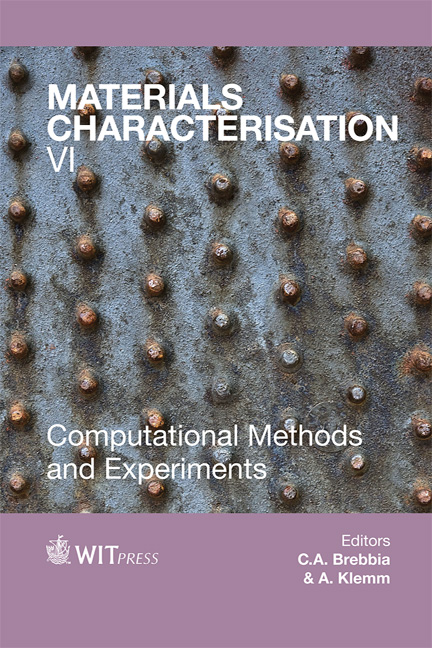Self-healing Of Steel Corrosion In A Model Alkaline Medium: Electrochemical Response And Surface Analysis
Price
Free (open access)
Transaction
Volume
77
Pages
12
Page Range
205 - 216
Published
2013
Size
2,291 kb
Paper DOI
10.2495/MC130181
Copyright
WIT Press
Author(s)
D. A. Koleva, J. Hu, H. Kolev, K. & Van Breugel
Abstract
The application of polymeric nano-particles for corrosion control in reinforced cement-based systems was studied. As an initial investigation, steel electrodes (St37) were tested in modified cement extract (CE), which is a model pore solution of pH 12.9 and chemical composition: 201 mg/l Ca; 3.85 mg/l K; 1.33 mg/l Na; 4 mg/l Al, Fe < 1 mg/l. Corrosion initiating factor was 5% NaCl. PEO113-b-PS780 vesicles at 0.0024 wt.% in the CE were employed. These are nano sacs of 220 nm, enclosing a volume with a thin membrane, thus able to effectively entrap water-soluble compounds. Ion binding (bulk liquid medium), steel surface adsorption and/or participation in oxide layers formation were the expected mechanisms of particles’ involvement. Both \“empty” and \“Cacontaining” vesicles were studied to evaluate \“barrier” effects only vs. selfhealing mechanisms. Increased steel corrosion resistance in the presence of both vesicle types was observed, however, it was more pronounced when Cacontaining ones were involved. CVA and XPS analysis, substantiate the selfhealing phenomena, through a direct evidence of pitting formation and propagation and consecutive healing (and no further pit formation) when Cacontaining vesicles are present. Keywords: corrosion, cement extract, vesicles, self-healing.
Keywords
corrosion, cement extract, vesicles, self-healing





